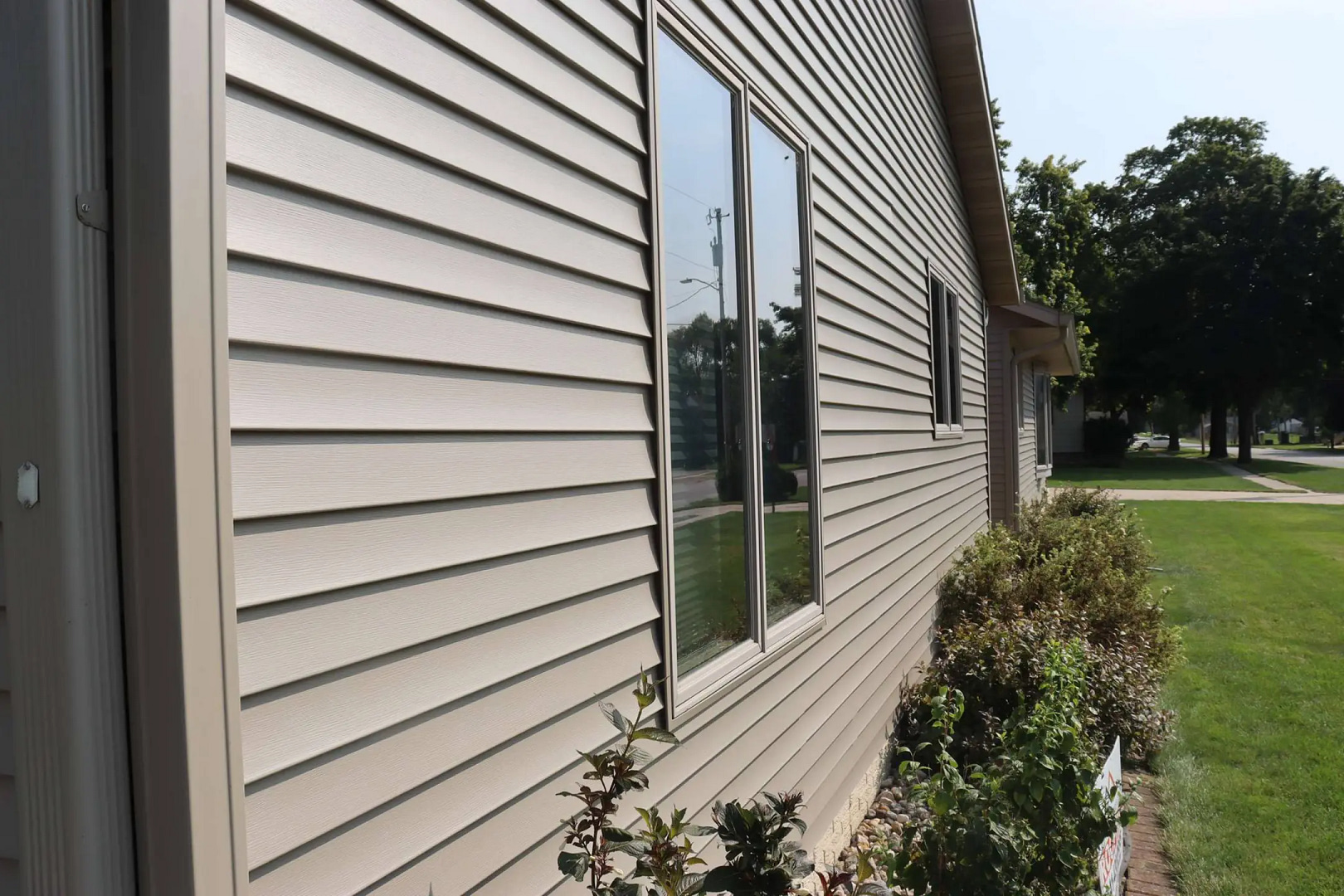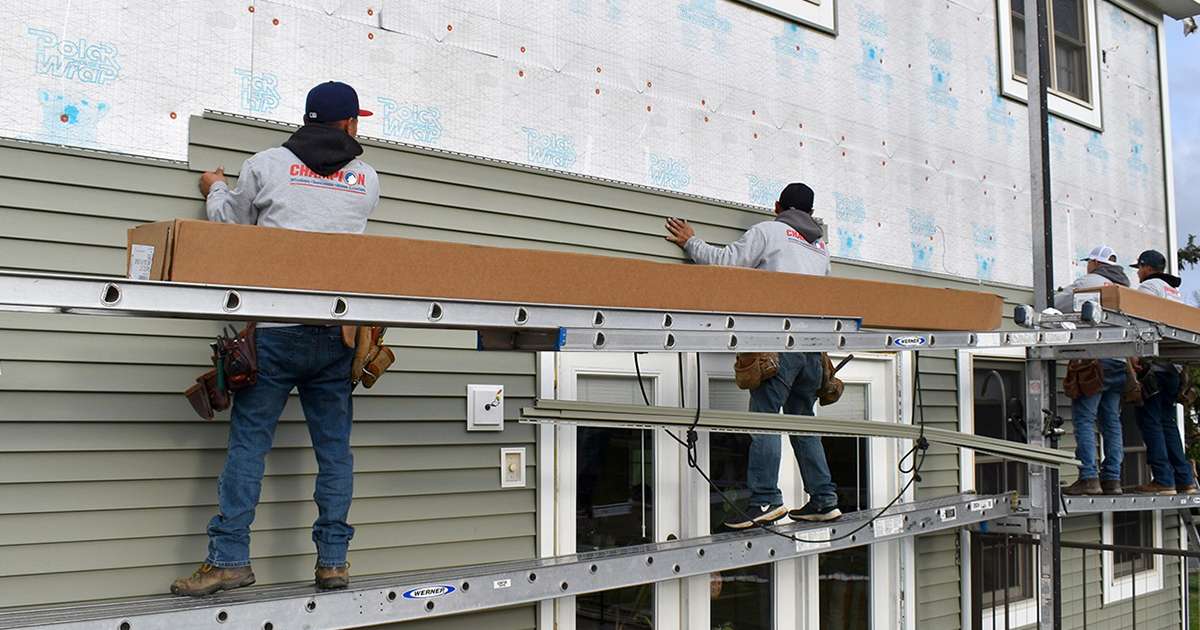The Crucial Guide to the Numerous Kinds Of Siding and Their Unique Advantages
In the world of home enhancement, picking the ideal home siding is a vital decision that influences both visual charm and functional efficiency. With so lots of options to think about, which siding material absolutely stands out for your certain project?
Timber Home Siding
Timber house siding, a popular option for household exteriors, supplies an ageless aesthetic that incorporates natural appeal with architectural honesty. This house siding material is available in numerous designs, including clapboard, shingles, and board-and-batten, enabling homeowners to personalize their façade to match their style choices. Timber house siding is typically crafted from durable species such as cedar, redwood, or want, which are recognized for their strength and capability to hold up against ecological stressors.
Among the key advantages of timber siding is its outstanding insulation residential properties, which can add to power efficiency and reduced heating costs. Furthermore, wood siding is eco-friendly, making it an environmentally pleasant choice when sourced sustainably. Routine maintenance, consisting of paint or discoloration, can lengthen its lifespan and improve its look, allowing house owners to preserve the natural charm of the timber.
However, potential drawbacks consist of susceptibility to bugs, rot, and weather condition damage, necessitating ample treatment and upkeep - morris siding contractor. Despite these problems, when effectively taken care of, wood house siding can give a attractive and resilient service that enhances the personality of a home while offering a warm, welcoming ambience

Vinyl Exterior Siding
Vinyl siding has actually emerged as a leading option for property owners seeking a low-maintenance exterior option that combines longevity and price. This functional material is crafted from polyvinyl chloride (PVC), making it immune to numerous climate condition, consisting of dampness and UV rays. Therefore, vinyl house siding does not warp, rot, or fade, making sure lasting aesthetic appeal.
One of the key benefits of vinyl house siding is its extensive variety of shades and designs, enabling home owners to achieve the wanted seek their residential property without the demand for regular repainting. Additionally, plastic house siding is easy to mount, which can dramatically lower labor prices throughout building and construction or remodelling jobs.
Vinyl home siding additionally contributes to power effectiveness. Many options attribute insulation support, which boosts thermal performance, assisting to preserve comfy indoor temperature levels and potentially decreasing power expenses. Its smooth surface area assists in simple cleansing, requiring just periodic cleaning with a garden hose to get rid of dust and particles.
Fiber Cement Exterior Siding
Fiber cement exterior siding has acquired traction amongst home owners and builders alike as a result of its impressive mix of resilience and aesthetic adaptability. Composed of a blend of sand, concrete, and cellulose fibers, this siding option is crafted to endure extreme climate condition, consisting of high winds, heavy rain, and temperature level changes, making it a resilient option for residential outsides.
Among the key advantages of fiber concrete house siding is its resistance to bugs, such as termites, and its non-combustible nature, offering enhanced fire safety. morris siding contractor. In addition, it is available in a large range of shades, designs, and appearances, enabling house owners to accomplish their desired visual without giving up performance
One more benefit is its low upkeep needs; fiber cement house siding usually needs paint or discoloration every 5-10 years, which is less regular than other materials. Its long life adds to a reduced overall expense of ownership, as it reduces the requirement for frequent repair services or substitutes.
Eventually, fiber concrete home siding More Help represents an excellent financial investment for those looking for a resistant, appealing, and functional outside alternative, combining both kind and function to improve the home's visual allure.
Steel Siding
The attraction of metal house siding exists in its durable resilience and modern-day aesthetic charm, making it a popular selection for modern architecture. Offered in products such as light weight her explanation aluminum and steel, metal siding uses a series of shades and finishes, permitting house owners to achieve a customized look that enhances their design vision.

Energy effectiveness is one more considerable advantage, as several metal home siding items are designed with insulation choices that aid control interior temperatures. This can bring about minimized energy expenses in time. Additionally, metal siding is typically recyclable, making it an eco-friendly option for sustainability-minded house owners.
The setup process for steel home siding can be relatively simple, causing a quicker turnaround time for construction tasks. In general, metal home siding integrates capability and style, making it a practical option for those seeking a visually appealing and long-lasting exterior finish.
Block and Stone Siding
Block and rock home siding attracts attention as an ageless choice that boosts the aesthetic charm of any type of home. Understood for their longevity and low upkeep, these products give a phenomenal roi while raising the property's aesthetic allure. Offered in various shades, structures, and patterns, brick and rock can be tailored to fit diverse architectural styles, from standard to modern-day.
Among the main benefits of block and rock siding is their power performance. Both materials possess natural shielding buildings that aid control interior temperature levels, possibly decreasing cooling and heating costs. Additionally, they provide superior fire resistance compared to various other house siding alternatives, adding to enhanced safety.
Another benefit is their long life. Brick and stone can last for decades, typically requiring very little upkeep past occasional cleansing. Unlike timber home siding, they are impervious to pests and rot, making sure a long-lasting exterior that holds up against the aspects.
Verdict
In summary, the selection of house siding significantly influences a home's visual charm, energy effectiveness, and upkeep requirements. Each type of siding-- whether wood, vinyl, fiber block, concrete, or steel and rock-- supplies one-of-a-kind benefits customized see here to different property owner preferences and environmental problems.
One of the key benefits of wood siding is its outstanding insulation residential properties, which can contribute to energy effectiveness and lower home heating prices. Additionally, timber home siding is eco-friendly, making it an environmentally friendly alternative when sourced sustainably.One of the key advantages of steel house siding is its resistance to various ecological variables.Energy performance is an additional considerable benefit, as numerous steel home siding products are developed with insulation alternatives that help regulate indoor temperature levels. Each kind of home siding-- whether wood, plastic, fiber concrete, brick, or metal and stone-- provides unique advantages tailored to different house owner preferences and ecological conditions.